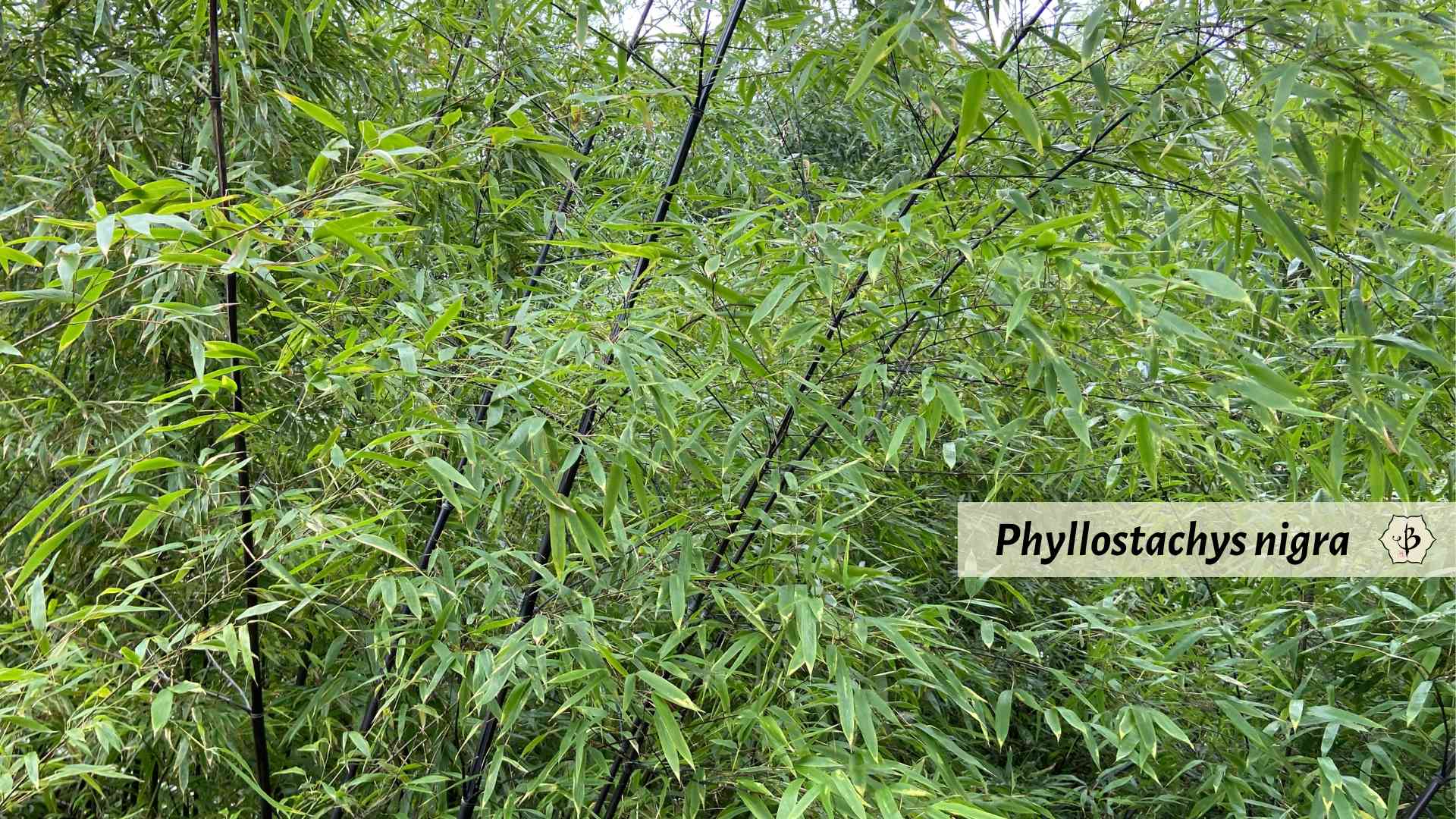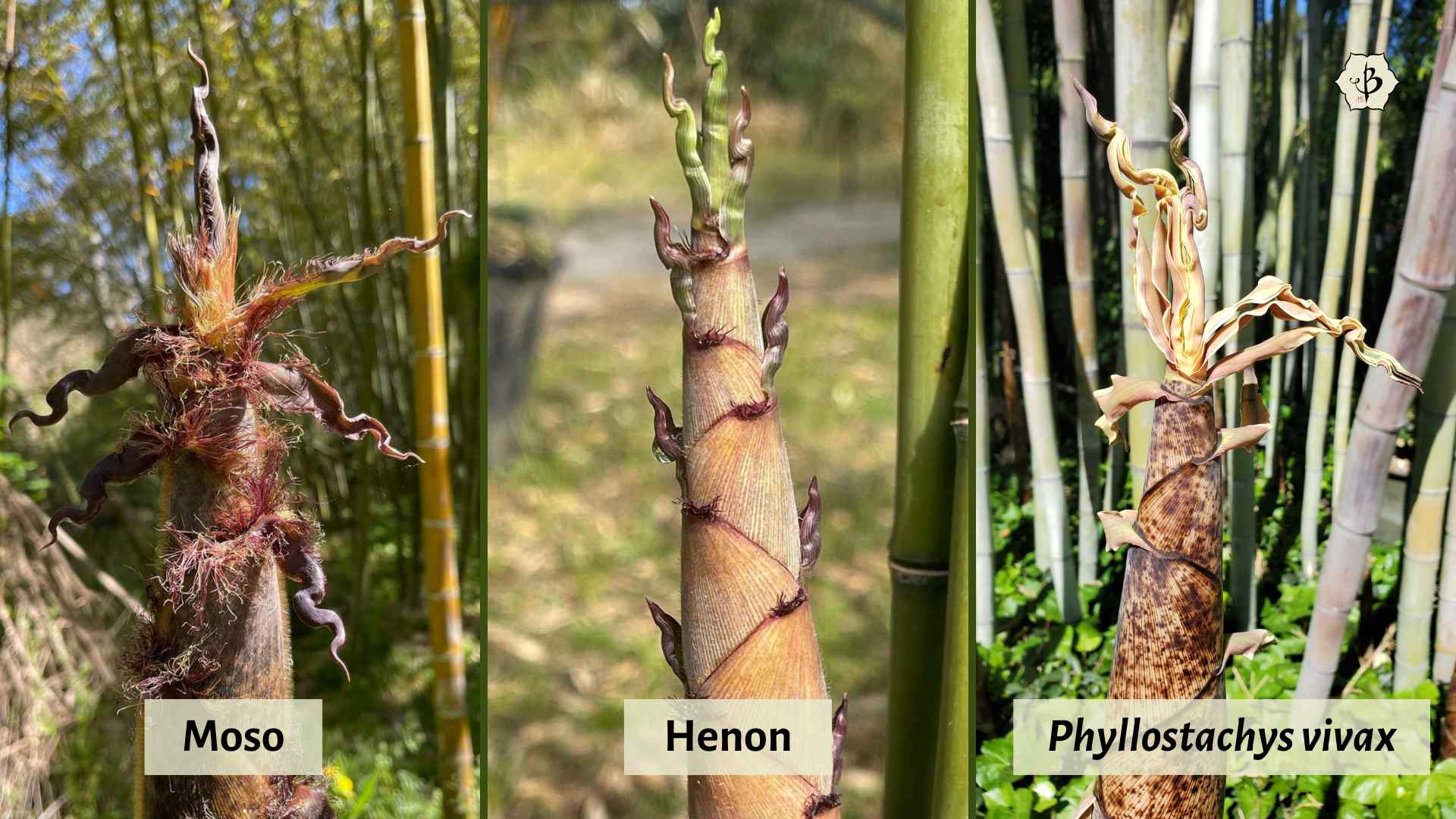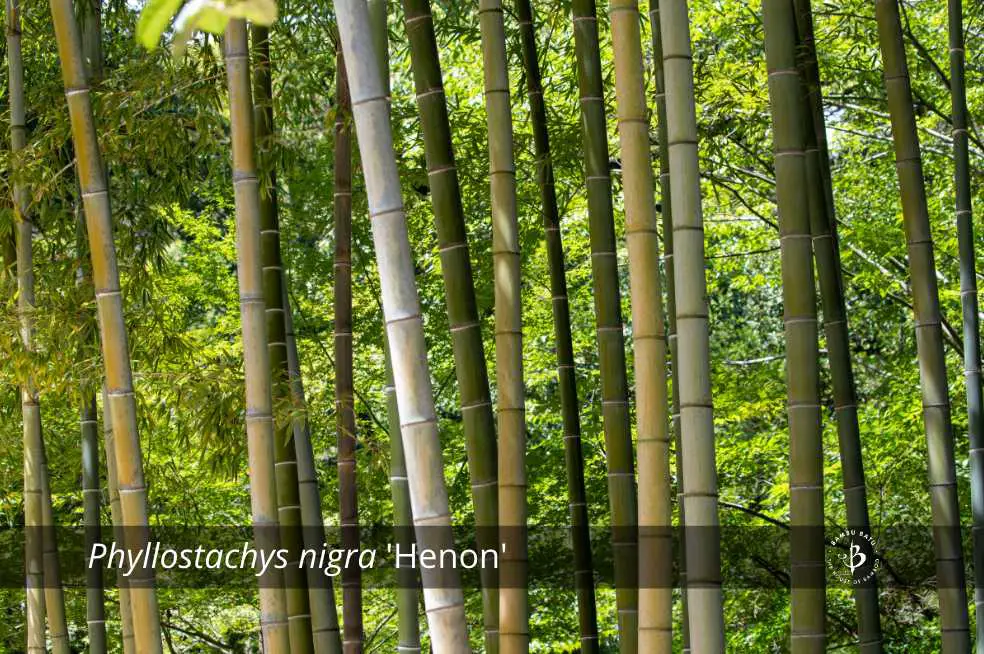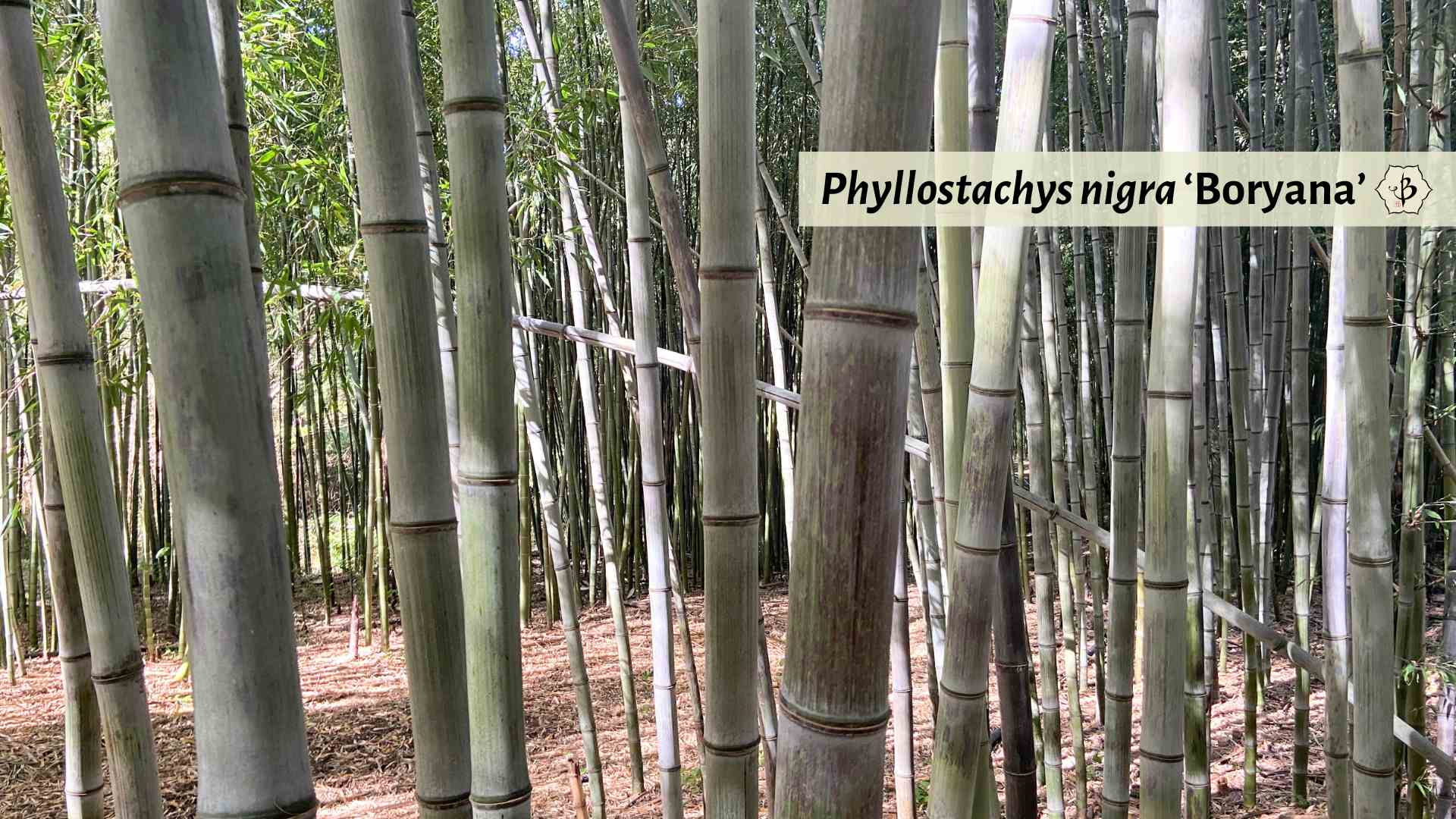So you’re ready to plant some bamboo, and you want to make a bold statement with it. But finding the optimum species isn’t so easy. When you peruse the species list, the names are hard to pronounce and equally difficult to remember. And recommendations like giant bamboo, timber bamboo or tropical bamboo are just too general to be helpful. But then there’s Phyllostachys ‘Henon’, which grows to epic proportions, tolerates most climates, and has a nickname that’s easy to remember.
Phyllostachys nigra ‘Henon’ is a subspecies of Black Bamboo that also goes by the name of Giant Gray. Unlike the typical Black Bamboo, Phyllostachys nigra, the subspecies henonis, or Henon, is a timber variety that can grow as tall as 60 feet. Rather than black stems, the culms of Henon bamboo start out silver-green and mature to an olive-gray color. These plants are cold-hardy to about 0º F and fairly drought-tolerant once established. They also produce edible shoots that can be very tasty.
This article — first published in August 2021 and most recently updated in April 2024 —is part of an ongoing series about different types and species of bamboo. To learn more about this fascinating and diverse collection of grasses, check out these other articles.
- Running bamboo vs Clumping bamboo
- Chimonobambusa tumidissinoda: Walking stick bamboo
- Bambusa oldhamii: The most popular bamboo
- Moso: The king of grasses
- Semiarundinaria fastuosa: Temple bamboo
- Native bamboos of North America: Genus Arundinaria
What is Phyllostachys nigra ‘Henon’?
When you look at Giant Gray bamboo, also known as Henon, you might be surprised to learn that it’s a subspecies or cultivar of Black Bamboo, Phyllostachys nigra.

Black bamboo only grows about 20 or 30 feet tall in ideal conditions, with culms up to about 2 inches thick. And of course, the poles are also very dark, nearly black, which is how the species earned its name. Henon grows much taller and thicker. In the best conditions, its culms can grow up to 60 feet tall, with a 4 to 5-inch girth. In other climates, they might only grow between 15 to 40 feet. The silver-gray coloration also gives the canes of this bamboo a distinct appearance.
But other similarities in the plant structure have convinced botanists and bamboo experts that these are actually two varieties of the same species. Some authors even speculate that Henon was the original species from which Black Bamboo later derived. But that’s a mystery that might never be resolved.
Of the genus Phyllostachys
Henon belongs to Phyllostachys, the most diverse genus of temperate bamboo. This genus includes some of the most prolific and widespread bamboos, coming in all shapes and sizes. Like the majority of Phyllostachys species, Henon is a native to China.
Henon is a running bamboo, like all Phyllostachys. Therefore it’s important to place some kind of barrier or to dig a trench around the grove to keep it from spreading too far and wide. This species won’t spread as vigorously as P. aurea or P. bissetii, for example, but it’s certainly no clumper. If you’re looking to create a flourishing privacy screen or sprawling bamboo forest, Henon is one of the best.

The two chief markers of Phyllostachys species are the sulcus groove (a shallow indentation that runs along the internodes on alternating sides) and the arrangement of branches (two unevenly sized branches at each nodal joint).
The most similar species are P. edulis (Moso bamboo), P. bambusoides (Japanese timber bamboo), and P. vivax. These are all timber bamboos of comparable size. It can especially difficult to recognize and differentiate these species. Oftentimes, the differences in size and appearance have as much to do with the climate as with the species.
Why we love Giant Gray bamboo
The size and the color are the most distinctive features of this bamboo variety. If you’re looking for an attractive timber bamboo, Henon could very well be your best choice. The culms are upright and majestic, and they fill in quickly to provide a real bamboo forest effect. The deep greens and grays also produce an enchanting aspect.
Most species of timber bamboo, namely those that don’t belong to the genus Phyllostachys, require tropical or subtropical conditions. That means that unless you live in a place like Florida, Alabama or Southern California, you’ll have a hard time growing them. As a temperate bamboo, Giant Gray is cold hardy down to around 0º F.
It will take more than a little ice and snow to stop this glorious bamboo. Not only that, but this is also a relatively drought-tolerant bamboo, once its roots are well-established.
Furthermore, this variety of bamboo is more than just pleasant to look at. It’s remarkable on the inside as well. What I mean is that Henon poles aren’t just big around, but they also have very thick and sturdy walls. This makes them stronger, less likely to crack, and generally superior for building and construction.

Choosing Henon for bamboo farms and gardens
In recent years, as bamboo gardening and cultivation have gotten more common, Giant Gray has become an increasingly popular choice. The combination of beauty and utility makes it an excellent variety for gardeners and farmers alike.
West Coast gardeners with sufficient space love to plant Henon on their property. The mild climate in California is most favorable, and the ample rains in the Pacific Northwest really allow this one to thrive.
In the Deep South, where bamboo farming is starting to gather momentum, Henon is one of the primary varieties, along with Moso and P. rubromarginata. Henon’s thick poles are perfect for building, and the dense growth can yield a bumper crop of biomass. The edible shoots of this species also qualify it as a cash crop, even before the plants are mature enough to produce construction-grade timber.

Read on
If you enjoyed learning about Phyllostachys nigra ‘Henon’, or Giant Gray bamboo, then you’re sure to find more worthwhile articles in our blog. Check out some of these popular topics:
FEATURE IMAGE: A resplendent grove of Phyllostachys nigra ‘Henon’ flowering in Paris, France, spring 2024. Photo by Fred Hornaday.

























